
Before the COVID-19 pandemic, the grocery sector ran stably and slowly without much
growth.
It was considered a peripheral channel for delivering groceries. But, grocery buyers started
moving towards online grocery delivery platforms. As per the report by Acosta, around 45
percent of the public purchased groceries via online media instead of visiting physical stores.
This pandemic has ignited the online grocery delivery trend strongly, where over a 10% hike has
been observed, along with a boost in total grocery sales by 15% during the peak of the COVID.
In the United States, online grocery shopping touched 90 billion USD in sales at the end of
2020,
with an increase of 30 percent observed.
This post will share the history of the online grocery delivery industry in the United States,
recent players, and the COVID outbreak effects on grocery trends.
Origin of Online Grocery Delivery Industry and Early Pioneers

The beginning of online grocery shipping was in the late 1990s, when customers had just
started placing online orders, and it was the primary area of focus initially. To motivate
buyers
to use the online delivery system, platforms offered lucrative rewards and offered to high-
spending customers, saved time, and increased convenience and flexibility. The first online
grocery delivery platform was Peapod, founded by the Parkinson brothers in 1989. To use
their
services, users needed to install software from CD-ROMs to place grocery orders. It took
years
for Peapod to stamp the authority in the market; they are still in operation.
Further, HomeGrocer and Webvan were two initial startups started in 1996-1997 in
Washington and California, respectively. Regarding their progress, Webvan launched the
business successfully in California and expanded to operate in more than 25 major cities.
But,
they came into the limelight when the bankruptcy was filed after a couple of years. Further,
HomeGrocer quickly developed the required setup in Washington and infrastructure to manage
the business, including a warehouse to store groceries and vehicles to deliver orders. They
had
a standout growth earlier when they started and reached sales of over 1 Million USD a day in
mid-2000. Later, they spread themselves to Texas, Georgia, Illinois, Oregon, and California.
Modern eCommerce Players In Demand
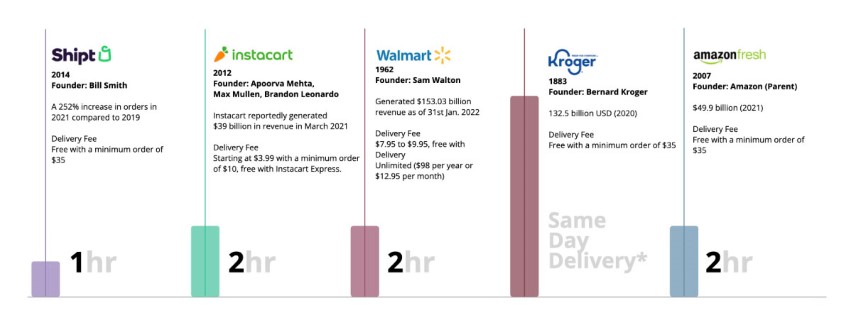
When the corona started spreading around the globe, grocery delivery
service platforms like
Instamart, Amazon Fresh, Walmart, and their supermarkets became busy with a spike in
massive demand for online groceries. To handle these orders, stores had to make many service
changes. Even a few grocery delivery firms had to introduce waiting lists and online queues
to
increase new customers. According to a market survey, more than 50% of shoppers continued
shopping for groceries online because of their experience and comfort, signaling that the
trend
to shop for groceries online will continue after the COVID outbreak.
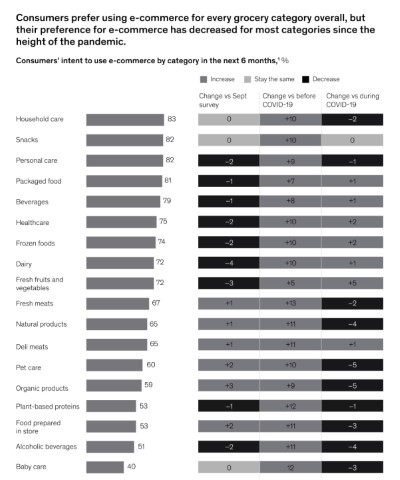
As buyers choose more digital platforms to purchase groceries, this on-demand grocery
delivery
trend is becoming more critical for brands and customers. As per the survey done by McKinsey
and Company, Health care items, fresh veggies, fruits, beverages, meats, and frozen fruits,
are
likely to remain famous in the United States among shoppers after the pandemic.
Simultaneously, CoreSight research shows fresh veggies and fruits were the leading sellers
in
2020-2021. Frozen food, bakery foods, fresh dairy, meat, and eggs were leading in the online
demand.
Why are Grocery Consumers Going Digital?
Ordering groceries online offers a more personalized experience to buyers since they get to
buy
multiple products in a single order using recommendations. If you decide to work using AI
algorithms, and data analysis, grocery stores can target an accurate audience and offer
better
delivery to their customers.
Flexibility
Trending grocery shopping offers various options to customers, like buying
online and picking
up from stores, click and collect, subscription, option-based pricing, and much more. It
gives
choice and accessibility to customers looking for fast delivery with convenience.
Convenience
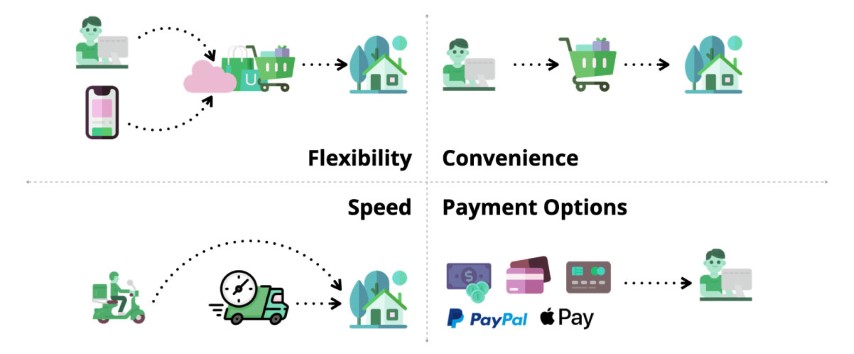
With rules and regulations for social distancing and safety, buyers started
to depend on online
services to purchase groceries instead of waiting in long queues to avoid potential risks.
Further, they have also considered safety, Speed of delivery, and convenience as top
priorities
instead of discounts and negotiations. Moreover, online shopping methods have also differed
depending on devices and generation. Out of total shopping, 40% of orders were from mobile
users, while 52% ordered from computers.
Speed
The most crucial factor in considering fresh food orders is Speed. You can quickly order a
few
items for a particular recipe and get it delivered within a few minutes, hardly a couple of
hours.
Here, growing competition has reduced the delivery time from hours to minutes by newbie
startups like Jiffy, GoPuff, to compete with established stores like Amazon Fresh. These
quick
delivery time options made it hassle-free for buyers to shop for fresh food.
Multiple Payment Modes
While shopping at physical stores, there are only a few options to pay bills. However,
customers
want flexibility in payment modes in today's digital world. Here, having monthly payment
plans,
credit cards, debit cards, and PayPal options to pay bills make customers comfortable buying
more regularly.
How to Run a Grocery Delivery Business?
Using customer data, online grocery shops can model services that meet customer
requirements. The trending demand for convenience and Speed puts pressure on this industry,
like inventory management issues, including fresh product availability, and risks involved
in
maintaining the quality of fresh products. On the other hand, the benefit of offering these
services is that it helps you with a details customer journey overview.
Suppose you're a Grocery delivery startup and want to analyze the market,
competition,
delivery schedules, and other essential details to plan your SOPs. Reach out to us at art
Product
Data Scraping; we help you boost your grocery delivery business with the help of data.






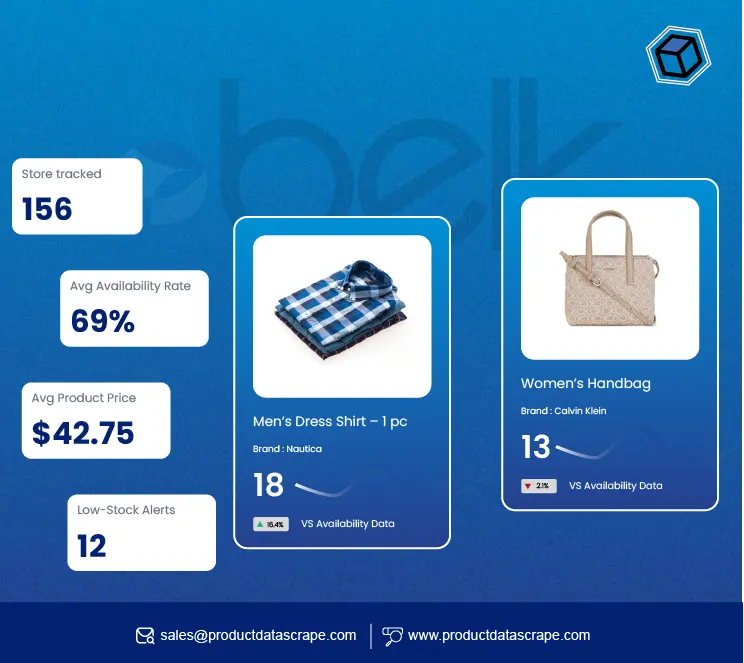


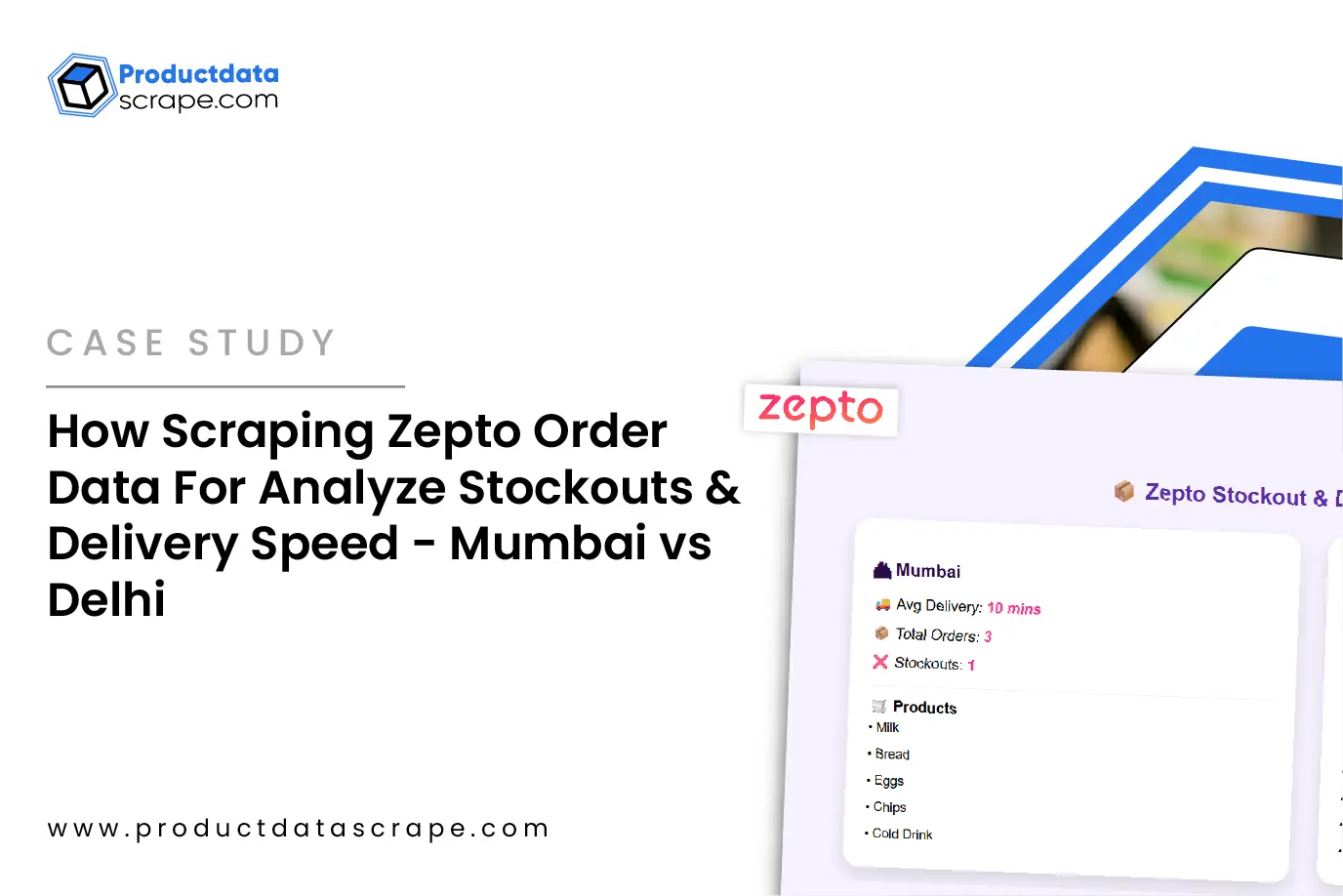











.webp)




.webp)
.webp)
